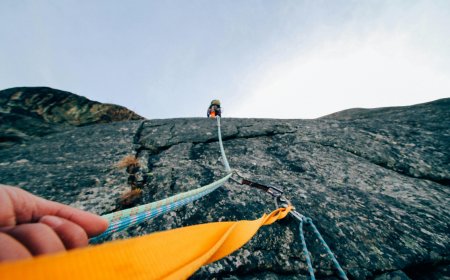Wilderness First Aid
Wilderness First Aid: Vital procedures for providing immediate and crucial care to survive in wilderness conditions and effectively deal with accidents and injuries.

Wilderness First Aid: Vital procedures for providing immediate and crucial care to survive in wilderness conditions and effectively deal with accidents and injuries.
Wilderness First Aid
A wilderness first aid guide provides a range of useful guidelines and instructions for learning how to administer first aid in wilderness conditions and harsh environments. The aim of this guide is to equip individuals with the necessary knowledge and skills to deal with emergencies and injuries in the wilderness, usually encompassing several key aspects:
1. Providing basic information: The guide begins by explaining the concept of first aid and its importance in the wilderness, outlining its objectives and how crucial it is for survival and safety in natural environments.
2. Identifying risks and threats: It highlights common risks in the wilderness and the threats adventurers may face, such as injuries from accidents, bites and stings, and harsh weather conditions.
3. Providing guidelines for handling common accidents: The guide offers specific steps to deal with common accidents such as bone fractures, burns, severe bleeding, and breathing difficulties.
4. Explaining the use of first aid equipment: The guide provides instructions on how to use various first aid equipment that adventurers should carry with them on their trips.
5. Teaching basic first aid techniques: The guide includes detailed explanations of basic first aid techniques such as cardiopulmonary resuscitation (CPR), wound dressing, and splinting fractures.
6. Clarifying precautionary measures and prevention: It educates adventurers on the importance of following precautionary measures and being cautious to avoid injuries and health problems in the wilderness.
This guide aims to provide knowledge and confidence for individuals to deal with emergencies and provide immediate and effective care in wilderness conditions, thereby increasing the chances of survival and success for wilderness travelers.
Vital skills for dealing with emergencies
Dealing with emergencies in the wilderness requires a set of vital skills to effectively and quickly administer first aid.
1. Situation assessment: A fundamental skill in handling emergencies is the ability to quickly and effectively assess the situation. Responders in the wilderness must be able to identify the type of injury or incident and assess the level of urgency to take appropriate action.
2. Swift and effective action: The ability to act swiftly and effectively is crucial in emergency situations. This includes making sound decisions and taking necessary actions quickly to maintain safety and provide necessary medical care.
3. Effective communication: Vital skills also include the ability to communicate effectively with others in emergencies. Responders must be able to communicate clearly and understandably to exchange necessary information and direct medical operations correctly.
4. Efficient use of first aid equipment: Responders in the wilderness must be familiar with how to effectively use first aid equipment, such as bandages, splints, and CPR equipment. They should be trained to use this equipment quickly and accurately in emergency situations.
5. Maintaining composure and providing psychological support: It's crucial for responders in the wilderness to maintain their composure and emotional resilience to provide effective first aid. They should be able to offer psychological support to the injured and maintain hope and optimism.
6. Team collaboration and organization: In wilderness emergencies, collective collaboration and organization are required to ensure effective and timely first aid. The team must work in coordination and cooperation to achieve the best results in facing emergencies.
These vital skills play a crucial role in individuals' ability to handle emergencies in the wilderness and provide effective and organized first aid to the injured.
Important Tips and Techniques
1. Rapid assessment: Before initiating any first aid procedure, quickly assess the situation to determine the type of injury and the level of urgency.
2. Maintain personal safety: Always ensure your own safety first before attempting to help others, and use gloves if available.
3. Communicate with the injured person: Try to communicate with the injured person in a calm and reassuring manner to calm them down and provide psychological support.
4. Proper immobilization of injuries: Use bandages and splints to immobilize injuries correctly to reduce the risk of excessive movement.
5. Dealing with bleeding: Use compression bandages to control bleeding, apply direct pressure to the wound if necessary.
6. Administering CPR: In cases of severe breathing injuries or cardiac arrest, administer CPR with personal protective equipment if available.
7. Efficient use of medical equipment: Ensure you know how to use the medical equipment in the first aid kit, such as scissors, splints, and wound closure tools.
8. Documenting procedures: Document all procedures performed and important observations about the condition to assist in subsequent care and performance evaluation.
These tips and techniques are an important part of wilderness first aid skills, helping to provide immediate and effective care for the injured in emergency situations.
Preparing a Wilderness First Aid Kit
Preparing a wilderness first aid kit is a crucial step to ensure the ability to provide immediate care in emergency situations.
1. Choose the appropriate first aid kit bag: Look for a durable, waterproof bag with multiple pockets for organizing equipment efficiently.
2. Fill the kit with essential equipment: Include a variety of basic equipment such as different types of bandages, splints, cutting and removal tools, CPR equipment, and essential medications like pain relievers and antihistamines.
3. Customize equipment according to individual needs: Customize the equipment based on individual needs and the nature of the trip, for example, adding extra gear to deal with bites and stings if the trip is in an area with poisonous insects.
4. Regularly replenish the stock: Ensure regular replenishment of the kit's stock to have new and effective equipment available, and check existing equipment for safety and usability.
5. Learn to use equipment properly: Before the trip, make sure you know how to properly use each piece of equipment in the kit, and practice applying various first aid techniques.
6. Carry a first aid manual: Don't forget to carry a manual or booklet for first aid to refer to in case additional guidance is needed.
7. Regularly review the kit: Regularly review the kit to ensure its readiness and ensure that all necessary equipment is available.
Preparing a wilderness first aid kit is an important investment in personal safety and the ability to manage emergencies during nature trips.
The Role of First Aid in Rescue
The role of first aid in rescue is essential to ensuring the safety of the injured and increasing survival chances in wilderness emergencies.
1. Providing immediate care: Rapid and immediate first aid is one of the most important factors for survival in emergencies. By providing immediate care, the injured can receive necessary treatment to reduce the severity of the injury and avoid serious complications.
2. Reducing fatalities: With timely and appropriate care provided by first aid, the risks of fatalities resulting from acute injuries or medical emergencies in the wilderness are minimized.
3. Preventing injury deterioration: Through prompt first aid, necessary care can be provided to prevent injury deterioration or worsening of the injured individuals' health condition, thus improving survival and recovery chances.
4. Offering basic care: First aid involves providing basic care for the injured, such as wound stabilization, bleeding control, and providing oxygen in cases of difficulty breathing, which helps stabilize their condition and improve survival chances.
5. Mitigating psychological effects: In addition to medical care, first aid provides psychological support for the injured and rescue participants, helping them overcome psychological shock and better cope with the emergency situation.
The role of first aid in rescue plays a vital role in providing immediate and effective care for the injured in wilderness emergencies, contributing to increased survival chances and preservation of life.
Challenges of Providing First Aid in Harsh Wilderness Environments
Providing first aid in harsh wilderness environments faces numerous challenges that increase the difficulty of delivering effective medical care and elevate the risk of the situation.
1. Distance from medical facilities: In harsh wilderness environments, there may be a significant distance from medical facilities and hospitals, making immediate first aid crucial to preserving the lives of the injured.
2. Difficult access: Harsh wilderness environments can be unstable and difficult to access, making it challenging for rescue teams to reach affected areas quickly and easily.
3. Harsh weather conditions: Weather challenges in the wilderness include extreme temperatures, sandstorms, and heavy rainfall, making it difficult to work in these conditions and increasing the risk of injury for rescue teams.
4. Natural hazards: Rescue teams and the injured are exposed to natural hazards such as rockfalls, predatory animals, and raging rivers, increasing the risk of the situation and requiring additional precautionary measures.
5. Wildlife encounters: Wilderness environments may be home to diverse wildlife, including venomous reptiles, insects, and mammals, increasing the risk of bites and stings and requiring knowledge of how to deal with them.
6. Lack of medical resources and equipment: Medical resources and equipment may be limited in wilderness environments, making it challenging to provide comprehensive and effective medical care to the injured.
Providing first aid in harsh wilderness environments requires overcoming many challenges that pose risks to safety and health. It requires thorough preparation and intensive training for rescue teams to effectively and safely deal with these changing conditions.
Preparing for Potential Emergencies
"Preparing for Potential Emergencies" encompasses several steps and measures that can be taken to ensure the ability to effectively and swiftly handle emergencies, with a fundamental part of this preparedness focusing on first aid.
1. Risk Assessment and Identification: Initiate by assessing potential risks in the area you are in and understanding various types of emergencies that may occur, such as natural disasters, human-caused accidents, or individual health emergencies.
2. Develop Personal or Community Emergency Plan: Based on the prior assessment, create a personal emergency plan for yourself or a community emergency plan if you are in a shared environment with others. This plan should include clear procedures for dealing with different types of emergencies, identifying safe havens, and methods of contacting medical and relief services.
3. Prepare First Aid Kit: Ensure your first aid kit is fully stocked and up-to-date, ensuring availability of all essential medical equipment and necessary medications to deal with various types of injuries and medical emergencies.
4. Training and Professional Development: Engage in first aid and emergency response training courses, regularly updating knowledge and skills to ensure effective readiness to handle any potential emergencies.
5. Communication and Collaboration: Establish communication with local and national authorities responsible for emergencies, maintaining constant contact to obtain current information and guidance during emergencies.
6. Practice the Plan: Conduct regular practical drills and exercises for your personal or community emergency plan, analyze performance, and learn from experiences to enhance response in the future.
By implementing these steps and measures, individuals and communities can enhance their readiness for emergencies and provide first aid effectively and efficiently when needed.
Summary
Wilderness first aid represents a set of essential skills and knowledge required to provide immediate and effective care for the injured in harsh natural environments. These basic first aid measures include rapid assessment of the situation, administering initial treatment for injuries, stabilizing wounds, managing bleeding, and performing CPR if necessary. Delivering wilderness first aid necessitates thorough preparedness, the provision of a comprehensive first aid kit, and appropriate training to address the unique challenges of wilderness environments. Wilderness first aid has significantly improved through advancements in technology and ongoing training, thereby increasing survival chances and preserving lives in wilderness emergency situations.
Sources
1. International Red Cross and Red Crescent
What's Your Reaction?




































































































































































